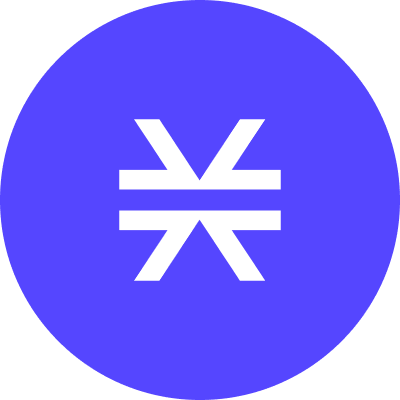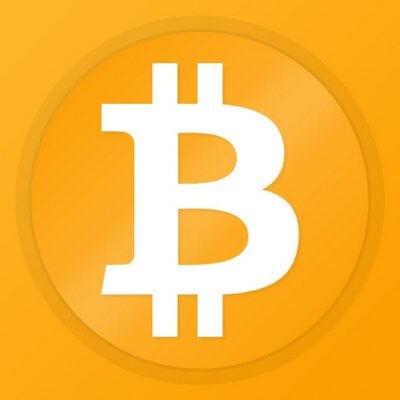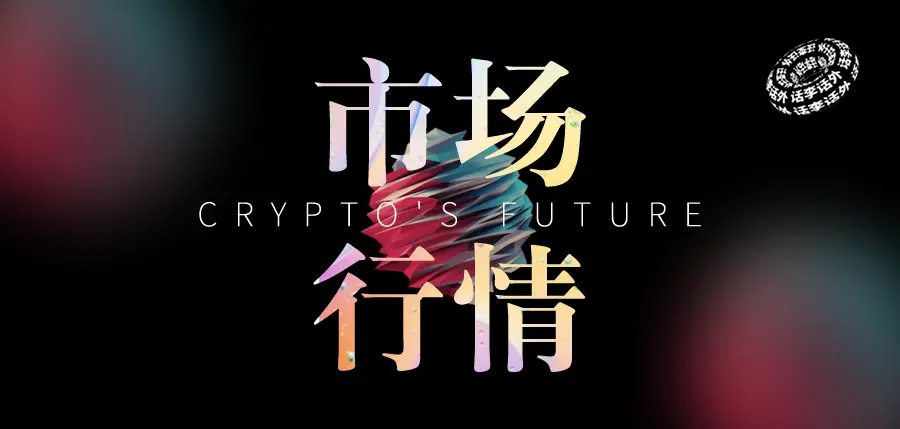Token 2049 Insights: The Desolation and Opportunities of Bitcoin in Singapore 2049
Author: Ken You, Co-founder of Hacash.com
(This article is part of the "Token 2049 Insights" series. We welcome readers to submit their "short essays" to us.)
Since the launch of Bitcoin's mainnet in 2009, it has been 14 years. During this time, the development of the crypto world has experienced ups and downs. I entered the space in 2017 and have gone through two cycles of bull and bear markets. I even co-hosted the first large-scale blockchain summit, Blockchain Connect Conference, in San Francisco in early 2018. The event took place just after Bitcoin reached its peak of $20,000 in December 2017, and the atmosphere was so vibrant that tickets were hard to come by, with scalpers appearing. At that time, few realized that a brutal bear market in the crypto space had quietly begun, and later it seemed that every conference was followed by a price drop.
The Token2049 event in Singapore has been nearly two years since Bitcoin's peak of $60,000 in November 2021, but its liveliness feels not much different from the event I attended in San Francisco back then, perhaps even more bustling. Over 10,000 attendees, countless projects, and 300 side events—one could hardly feel that this is the scene typical of a bear market.
Of course, compared to 2017, the landscape of the crypto space in 2023 has undergone tremendous changes, gaining recognition from more individuals and mainstream institutions. Recently, there has been a saying: the U.S. is unfriendly towards Web3 policies while Hong Kong is vigorously developing Web3, indicating that the industry is in a state of "East rising, West declining."
I still vividly remember the 2018 summit when the most popular Ripple CEO, Brad, appeared with several bodyguards, but this time at Token2049, he no longer had the same aura. The founder of Litecoin, Charlie Lee, had a solo speech that was packed, but now at Token2049, there is no news about Litecoin at all.
As an early experiment of Bitcoin, the phrase "Bitcoin is gold, Litecoin is silver," which was so popular in 2017-2018, is no longer mentioned today, while Bitcoin, as digital gold, continues to gain recognition from more and more people. However, Bitcoin is as simple yet uninteresting as traditional gold, appearing relatively monotonous and desolate throughout Token2049. In the main venue of the event, there were hardly any projects or booths focused on Bitcoin. Among the 300 side events, there were only a handful related to the development of the Bitcoin ecosystem, which starkly contrasts with Bitcoin's status as the top market cap project.
It seems that everyone participating recognizes and knows the importance of Bitcoin, and many hold Bitcoin as their largest crypto asset, but in reality, you can feel that they only regard Bitcoin's halving cycle as an important indicator for the next bull market, nothing more. When I introduce myself as someone working on Bitcoin's expanded ecosystem, I often receive two reactions: the first is, "Are you working on Ordinals?" and the second is, "Are you working on Layer 2?"
Thanks to Ordinals, the development of Bitcoin's ecosystem seems to have gained a certain level of attention again. As Muneeb, co-founder of the Bitcoin Layer 2 solution Stacks, said at Token2049 in his talk "Beyond Satoshi: Defining the Meta on Bitcoin," "Ordinals is a watershed moment for the development of the Bitcoin ecosystem."
However, there are sharp criticisms of Ordinals in the market: "Ordinals are increasingly like a plate, and those in this ecosystem do not care about the development of Bitcoin, nor do they care if they are truly related to Bitcoin, they are just riding on the concept of Bitcoin to sell tokens."
When you ask Ordinals project teams for their views, they express strong protests against Bitcoin's "laser eyes" (referring to Bitcoin core supporters), often represented by wearing "wizard hats." As newcomers to the Web3 industry, they believe Bitcoin is too conservative and unambitious.
At the same time, Nic Carter from Castle Island Ventures (some Chinese media mistakenly identified him as Nick Szabo, the father of smart contracts) pointed out that the trading volume of USDT has completely surpassed that of Bitcoin. Whether this is due to technical reasons or monetary reasons, the objective fact is that BTC's status as a settlement center is threatened or even surpassed. More Bitcoin laser eyes need to recognize the current situation; Bitcoin needs new technologies, new concepts, and new upgrades.
The internal war between laser eyes (conservative) and wizard hats (radical) in Bitcoin is still ongoing, but at Token2049, there is a tendency for everyone to believe that Bitcoin needs more development. The co-founder of Stacks pointed out that currently, new developers entering Web3 have only three choices: high TPS Layer 1s like Solana, Aptos, and Sui, the Ethereum Layer 2 ecosystem, and the remaining option is Bitcoin's expansion ecosystem.
Aside from the consensus and expectations surrounding Bitcoin's ETF, there is a sense of confusion about the future ecological development of Bitcoin, as it seems there is no overarching direction or narrative to lead Bitcoin's development. However, it is precisely this current situation and calmness that may brew a significant opportunity for the next round of Bitcoin development.
At Token2049, I met David, a Shannon Award winner, member of the National Academy of Engineering, and Stanford professor. He is fully leading the Bitcoin PoS staking project Babylonchain, aiming to achieve DeFi functionality for BTC on PoS chains; there was also the team from Layer Two Labs, the proposers of BIP300/301, primarily focused on solving Bitcoin's application expansion and miner incentive issues; and teams working on projects around the Lightning Network and RGB protocol, mainly optimistic about the development of the Lightning Network and achieving Turing-complete expansion of BTC through RGB; additionally, there are teams directly combining BTC with EVM through cross-chain sidechains. Some industry veterans also hinted that they are secretly preparing new projects for Bitcoin expansion.
Of course, there is also our leading BTC one-way transfer expansion solution Hacash.com, which not only addresses Bitcoin's application expansion and sustainability issues but also resolves Bitcoin's lack of new economic breakout points and unstable purchasing power, making it unsuitable as a daily medium of exchange. Essentially, everyone is currently in the first or second round of financing.
Due to financing needs, I had brief exchanges with over a dozen capital firms during the conference, and generally, everyone was very interested, but the responses were mostly that they had not previously invested in the Bitcoin ecosystem and had only recently started paying attention or closely engaging with Bitcoin ecosystem projects, such as the Bitcoin wallet Xverse, which recently raised $5 million.
Of course, some non-mainstream capital completely disregards what direction you are pursuing and straightforwardly tells you that they only care about how to make quick money. However, it must be said that aside from the teams simply issuing tokens through Ordinals, there are currently few investors who would refuse to understand a genuine new project in Bitcoin's expansion ecosystem.
It seems that in the visible future of the entire industry, there are only three major directions. First, new public chains, but the possibility is becoming increasingly low. Second, Ethereum Layer 2, where players are continuously entering and actively participating. Third is Bitcoin expansion, which has just begun and has few people paying attention. In comparison, I am more optimistic about the future of Bitcoin expansion, primarily because Bitcoin's monetary core is better than any new public chain or Ethereum.
What impressed me was when an Ordinals entrepreneur asked Professor David, "Will Bitcoin shorten block times in the future?" The professor immediately gave a negative answer. But in fact, anyone with a certain understanding of Bitcoin or industry veterans knows that this is impossible, as the war over Bitcoin's block size has already occurred once in 2017. No one can easily change Bitcoin's consensus rules, technical system, and monetary policy; this stability is the reliable foundation of Bitcoin's value.
These seemingly repetitive questions and discussions also reveal a benefit: those project teams entering the Bitcoin ecosystem through Ordinals or the developers, marketers, and operators of Bitcoin ecosystem projects are continuously understanding various aspects of Bitcoin and actively thinking about its future. They will be a formidable reserve force for the future development of Bitcoin.
However, anyone wanting to expand on Bitcoin or discuss its future must recognize the three major obstacles currently facing Bitcoin. First, Bitcoin zealots do not accept any form of criticism or suggestions for improvement, believing that Bitcoin is always and forever the most perfect and will dominate the world. This near-mad arrogance and self-deception will become a stumbling block for the community's progress. Second, Bitcoin's technical architecture is rough and primitive, making modification and expansion very difficult. Third, Bitcoin's purchasing power is quite unstable, leading to USDT replacing Bitcoin's settlement position, as only a settlement currency can become the core of an economic system; otherwise, there is always the possibility of being replaced by a better settlement currency.
If I were to offer some suggestions for Bitcoin's future development, there would be three main points: First, break and abandon the "cult of Bitcoin," objectively analyze and correctly understand the strengths and weaknesses of Bitcoin in all aspects; second, attempt various expansion solutions as much as possible under the premise of aligning with Bitcoin's values and decentralization, without preconceived obstructive notions; third, consider the most important issue: the stability of purchasing power, which is crucial in determining whether Bitcoin can enter real economic applications on a large scale, especially after Coinbase recently proposed the concept of Flatcoin, making this direction increasingly clear.
Bitcoin's current predicament also indirectly confirms the advantage of Bitcoin's decentralization, which is its essence distinguishing it from other crypto projects and may be the primary basis for Bitcoin maintaining its top market cap. However, it is precisely because of this decentralization that any individual's proposal could potentially influence Bitcoin's future, contrasting sharply with the "one-man rule" situation of Ethereum's Vitalik.
The Bitcoin ecosystem, whether in projects or capital, is in need of talent. In this nascent stage, which has received little attention, no one knows who will lead Bitcoin into the next grand new chapter. But heroes often emerge from the grass roots, and we should be confident that the gold rush era of Bitcoin expansion is coming.
Related Reading: “Exclusive Quick Interview with Token 2049 Title Sponsors: The Market is Maturing, We are on the Eve of Crypto Summer”















